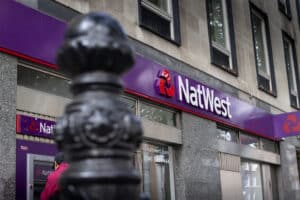Better PR for your business’s growth

<?xml encoding=”utf-8″ ?????????>
Contrary to the TV stereotype in Absolutely Fabulous and other cultural spoofs, a PR is far more than the character Edina guzzling bottles of champagne or an obsequious person in a marketing meeting who is thin on good advice and ideas.
The reality is quite different and hopefully you’ve met the right ones. Done well, PR is an art, a science and a vital component for your new business drive and company growth.
Sam Pepper, Founder of PR on a Tin provides her insights on making the most of a PR budget to support the growth of the business.
Ensure your PR budget is agile
It’s a fallacy that start-ups and scale-ups need to pay external PR agencies all of the time. Having advised hundreds of small and growing businesses for more than 25 years, I understand how critical it is to keep the marketing budget lean and also there are natural ebbs and flows with PR.
There are times when your business can put the pause button on PR activity and there are times when you should gear up. This may be a product launch, it may be a time to update your target audiences about the business, perhaps you need to raise the brand’s profile ahead of a fund-raising timetable or you need to give your new business development a boost. Traditionally, a business pays a PR agency or a consultant an ongoing monthly retainer. A different approach focused on a project basis (provided you do the planning) will free up a lot of £££ in the marketing budget and gives the brand flexibility to look at different initiatives, rather than feel locked into an ongoing PR commitment.
Enjoy the creative process but make sure it supports the commercial vision
The vital ingredient for an effective PR campaign is creativity. But to make this happen, the business needs to embrace the process – and not expect a PR to work in a silo.
The creative starting point is to ensure you get the brand, PR positioning and strategy right – do spend time working with your PR to create a distinct brand and external messages which will support the commercial vision and the business priorities. A big misunderstanding amongst businesses (and even some PRs) is to see the PR tactics as the creative part, but it all begins here.
For PR tactics, do be open to all creative ideas for the campaign. Creativity isn’t purely for consumer-facing brands, but also those working with other businesses and operating in the professional services industry. One management consultancy I worked with, did just that. To bring their brand to life and showcase their expertise they held a half-day event with some of their clients and invited an FT journalist to take part in a war-games activity, complete with travelling on speed-boats “James Bond style” down the River Thames! The ££ investment wasn’t that much (the hire of the speedboat and the cost of the venue) and because of the event and media coverage, the company benefited from direct new business leads and an immediate client win. Of course, you don’t need to go so bold and there are other ways to achieve the quality of coverage, but it all arises from allowing the creative process.
Quality of coverage to support new business
Too many marketers fall into the trap of ticking boxes when evaluating PR. And one of those boxes is focusing on quantity of press coverage hits as opposed to quality. Two-liner quotes in national media outlet can be great brand- boosters but the re-use of the article for new business can often be limited. And even if your PR team reaches the monthly KPI of, say five such media hits, one has to question to what degree these results are actually helping drive new business. In contrast, a news exclusive in one top tier media outlet or a 500-word expert by-line in a respected industry publication will be far more beneficial. It will also be valuable marketing collateral for your sales and marketing teams to use in the new business drive and to build momentum about your brand. It could accompany an email the team are sending to prospects, handed out at exhibition stands or posted on social media platforms.
Be pro-active not reactive
There are media tools, which allow journalists to post to PR subscribers about a current article they are writing and serve as an invitation for quotes on the topic. What tends to happen is 100 different PRs jump on the bandwagon to try and get quoted. It’s a reactive bunfight and rarely does a journalist have time to sift through all the emails. If you’re quick off the mark, there’s a chance that your spokesperson’s soundbites make the cut of one or two lines in the article, alongside other competitors. The reality is too many PRs and companies spend time drafting and getting sign off with little or no yield.
Instead, be proactive and drive the news or features agenda in different media outlets. Remember your brand is seeing the changes at the coalface; your business will be in a strong position to provide new and valuable insights gained from your day-to-day dealings with customers and clients, case studies, data or commissioning additional research to support your assertions.
Focus on the bigger picture
If you want to grow big, think big with PR and be prepared to invest time and allocate some or even all of the annual budget to a thought leadership campaign.
To be clear of exactly what a thought leader is, I always refer to Joel Kurtzman, who in 1994, as editor-in-chief of Strategy and Business magazine said “A thought leader is recognised by peers, customers and industry experts as someone who understands the business they are in, the needs of the customer and the broader marketplace in which they operate. They have distinctively original ideas, unique points of view and new insights.” Finding this point of difference requires creativity and collaboration between some of the senior management and your PR. Yet the return on investment (both time and money) can be huge and yield great results for your brand’s profile, new business pipeline and growth.




